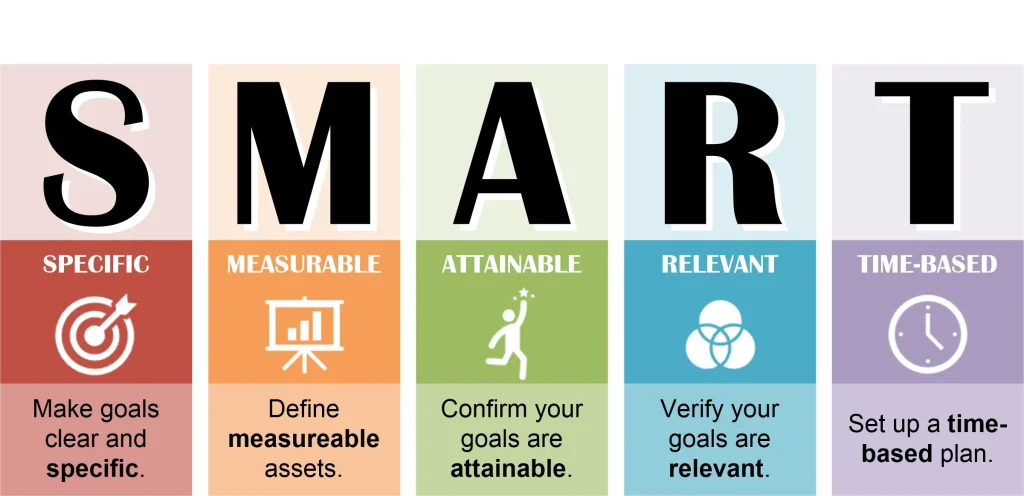A social media marketing strategy is a plan with guidelines, objectives, and goals to promote your company, products, or services, and connect with your target audience online.
The climate of social media marketing in Nigeria has changed since it was ever created.
Social media isn’t just another tool to communicate and talk with your friends, it has grown to become this amazing opportunity to create an experience for your target audience, engage with them, and boost your bottom line.
A successful social media strategy has many moving parts, but with our ultimate guide, you can craft a social media plan that fits your business’s digital marketing needs.
Your plan will include the social media platforms you’ll use, your goals for each social media channel, how you’ll meet those goals, and the metrics you’ll use to determine if your plan was successful.
Attracting more customers and creating more sales is essential for a successful business. Without a social media strategy, you’ll have no way to coordinate what your audience sees about your brand online or when.
If you’re looking for a way to increase website traffic, build brand awareness, and generate leads, you need to have a solid plan in place.

What is a social media marketing strategy?
A social media strategy is a detailed action plan that outlines the steps to achieve your social media marketing goals.
This master plan contains everything from your list of social media channels and promotion tactics to the responsibilities of the social media team and the metrics you will track.
It is a map that directs your social media marketing team’s every move. This includes your business goals, target audience, platforms you will concentrate on, content verticals, and much more.
Having an agile social media marketing strategy in place is crucial for taking quick and definitive actions. Creating strategies directs your focus on opportunities and challenges, helping you plan for all possible situations.
Why You Need a Social Media Strategy
If you don’t have a solid social media strategy driving your efforts, you’re wasting valuable time creating social posts for your social media campaign.
Planning your social media campaigns will help save you time and create a consistently strong digital presence across all your marketing channels.
Identifying your business objectives, social media marketing goals and target audience will help you create the right type of content to generate positive results.
No longer is it enough to post random social media content and hope it gets shared.
Because social media is a vital aspect of digital marketing, a well-thought-out and researched social media marketing strategy is essential to get the best results for your business.
Being active on social media has many benefits, such as:
Increasing brand awareness
Social media growth
Driving traffic to your website
Increasing user engagement
Generating leads
Getting insights into the needs of your audience to better understand which digital products or services you should offer
Building brand loyalty
In addition, creating and following a social media strategy forces you to get clear about the tactics you’ll use to reach your goals.
You’ll set benchmarks that tell you what’s working and where you need to make changes.
Steps to Create a Social Media Strategy
1. Define Your Business Goals
Not all your goals can be fulfilled simultaneously. You have to start from scratch and write down your business objectives in an order of priority. Going at them one at a time will make your efforts more effective.
Even a single end goal might seem too daunting and unreachable. So, break these goals down into smaller, achievable targets, which make them seem realistic.
By setting SMART goals i.e., making your goals specific, measurable, attainable, realistic, and time-bound, you give your team clear direction to plan and proceed.

Aimlessly chasing social media success without any end goals in sight would only result in wasting your time and resources.
When you create a social media marketing strategy, it’s easy to get caught up in “vanity metrics”. Fervently checking how many followers and likes you have might seem an obvious way to monitor success but be wary.
These particular social media measurements may not always paint the full picture. Ask yourself whether these followers are real and whether you’re converting any of them into paying customers.
Your social media marketing goals and business objectives need to talk to each other. Gaining lots of followers but not increasing your sales is a clear indicator that there’s still work to be done.
Look for specific indicators that will identify how often your brand is getting noticed and the type of actions your followers are taking.
Aside from understanding the reach and engagement your posts achieve, examine your conversion and click-through rates, particularly when using social media ads.
2. Run a social media audit
This is an important step that allows you to take stock of how your social media marketing plan has been performing.
Your social media audit will be an honest review of what’s been working on each social media channel and what hasn’t. You can do a full audit on Instagram only or for all the social media platforms together.
Use this time to understand your strengths and weaknesses online so that your new social media marketing strategy can build a clear path ahead.
How to conduct a social media audit:
write down all the social accounts you own
add your basic statistics, including follower counts, how long the account has been running, and who’s responsible for it
check that you have consistent branding and tone of voice across all your social networks
review all your contact information and bios – are you making the most of these fields?
check that all the links you use in your bios work properly
research which types of interactions have been the most successful – posts, reels, stories, and product types.
By collating all your social media data and reviewing it, you’ll have a much better idea of how to plan.
3. Analyze your target audience

Understanding your target audience makes creating a solid social media strategy easier.
You’ll know what kind of content to create and which content marketing platforms are the most valuable to your business.
Different Platform=Different Audience
Your target audience will prefer one social media channel over another. Where will you find your people?
If your target audience is professionals, you’ll find them on LinkedIn and Facebook.
But TikTok might be the best place to focus your social media efforts if you want to appeal to Gen Z.
You don’t need to be active everywhere—just the places that matter to your target audience
Gather data on your existing social media audience
Look at your social media analytics for your current social media following. What insights can you glean about them?
If your social media channels are new and you don’t have a following, look at Google Analytics, the analytics from your email service provider, or the analytics from your customer relationship manager.
You can even gain insight by looking at your best-selling products or services.
4. Select the Optimal Social Media Platforms for Your Brand
The success of your social media marketing initiatives also depends on which social media platforms you choose for marketing. But what businesses do is create accounts on every social media platform that comes their way.
Large brands like Starbucks and Target might be able to sustain this approach, but smaller businesses have to function on limited resources.
If you are the latter type, you must set your sights on the right social media platform or platforms to succeed in your marketing efforts.
Wondering how to make this crucial choice?
The solution here is to pay attention to your business category and the type of products or services you offer. You also need to consider whether your business follows a B2B, B2C, or C2C model.
5. Perform a competitor analysis
Look at your competition to see what they are doing and what’s working for them. Use this information not to copy what they’re doing but to shape your strategy.
You might think you know everything about your competitors or you might not have given them much thought at all. Carrying out competitive analysis is a vital step in forming your social media marketing strategy.
Don’t just look at what your competition is doing.
Use social listening to find out what is being said about them.
Social listening tools can point you to what others say about your industry.
Do you see an oncoming shift in industry trends? That’s an opportunity for you to change your social strategy.
Look at different social media channels and search for relevant hashtags for your industry.
If your customers can’t get what they want from you, they will go elsewhere!
So, who are your competitors?
Identify products and services online that are similar to yours
Review the social media accounts of businesses like yours – what do they tell you about the company?
Look for additional information from Google Trends, and read newspapers and business reports. Be inquisitive!
Use search engines for specific queries that your customer might use, such as the ‘near me’ query
The important thing to remember about competitive analysis is that if you’re checking out the competition, they’ll undoubtedly be checking you out too!
6. Develop a social media content calendar
As a social media tool, a social media calendar ensures that you share all the great content you will create.

Posting schedule
This is where you’ll decide when you are going to post.
Do you post Monday through Friday or seven days a week? Do you post multiple times a day or several times a week?
What time of day will you post? First thing in the morning? Late at night?
You’ll need to know when your people are online to answer these questions.
Refer back to your social media audit and evaluate your performance metrics.
Make sure you’re posting the right content
What kinds of content will you post?
You’ll want to mix it up, creating a variety of content that’s useful for your audience and content that helps you reach your goals, such as growing your email list.
If you’re unsure about your posting ratio, there are two schools of thought—the 80/20 Rule or the Rule of Thirds.
The 80/20 Rule
The 80/20 rule says that 80% of your posts should inform, educate, or entertain your audience.
20% of your posts should promote your brand.
The Rule of Thirds
The Rule of Thirds says that one-third of your content should promote your business, one-third should share ideas and stories from your industry, and one-third should be personal interactions with your audience.
Reply to your customers
This is the make-it-or-break-it strategy on social media. After all, social media is social, right?
If your followers leave comments, respond to them.
If they tag you while they’re showing off your product, give them a thank you for sharing.
If they have a complaint or a suggestion, listen and reply.
The two-way communication is noticed and appreciated. And it increases the know, like, and trust factor you need to turn followers into loyal customers.
7. Analyze and adapt
Your social media strategy should be a living document.
That simply means you monitor your social media activity and update your methods as necessary.
Evaluate performance metrics
Analyze each social channel’s metrics regularly to see how your posts perform.
Are your social media posts driving traffic to your website?
Is the audience converting in terms of email subscribers or sales?
Rinse and repeat
Compare your results to your goals and make the necessary changes.
With social media algorithms changing constantly, you must keep testing and refining your strategy.
Look at what’s working, change what’s not, test it, and analyze the results.
Repeat.
Conclusion
If you’re serious about creating a successful social media plan, it pays to think ahead. Make sure your content is optimized for your social media platforms.
Think about who your customers are and what they want from you. Carry out a social media review to understand the social media landscape in front of you and decide what type of content formats you want to use.
If you want to learn more about social media marketing and how you can use it to grow your business, then register for our professional digital marketing course today.
Our professional digital marketing trainers are willing to pour down their knowledge to ensure that you achieve your goal of being a social media expert.

